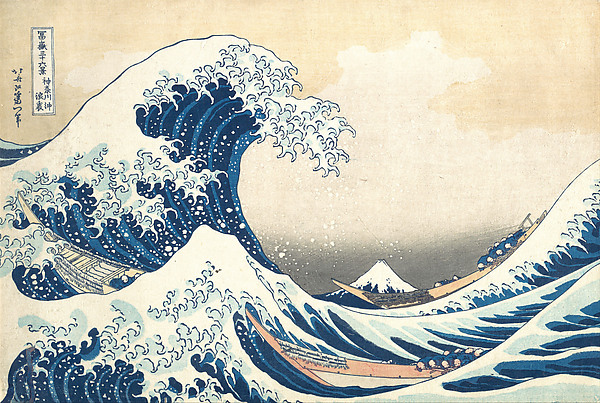Days After Japan
Katsushika Hokusai: The Great Wave, from thirty six views of mount fuji; and Bunsei, Landscape, mid 15th century Japanese are two pieces of art that interest me. Mt Fuji is normally the dominant figure of most artist but Hokusai made it to a smaller scale. The gigantic waves in the painting symbolizes how strong natures is and how weak humans are. Mt Fuji is very important to japanese culture, symbolizes stillness and eternity. Hokusai uses a different blue to distant him self from traditional japan pigment. The spray from top of the crashing wave looks like snow falling on the mountain, very detailed and instantly brings the viewer closer to the image. The image is asymmetrical because the waves are not evenly balanced. Of course Hokusai did not want to make the waves too big to take away from the most important element in this painting which is Mt. Fuji in the background.

Under the Wave off Kanagawa (Kanagawa oki nami ura), also known as The Great Wave, from the series Thirty-six Views of Mount Fuji (Fugaku …
Bunsei Landscape is a piece where there is not too much going on compared to the Wave painting. It represents the lonely serene spirit of the landscapes of that time. Theres a lot of negative space but it brings the viewer attention due to the deep shading and giving it a scary look. Its a zen ink painting. It looks like some of the dark spots/space resembles water.

Landscape latter half of the 15th century. Bunsei (Japanese, active mid-15th